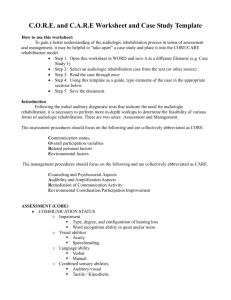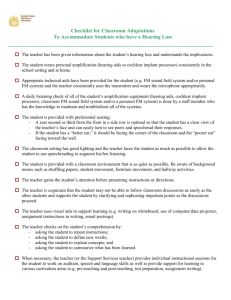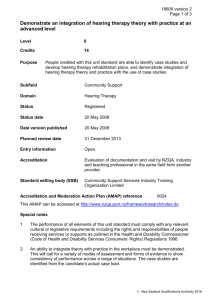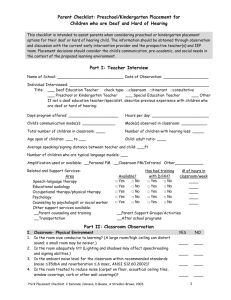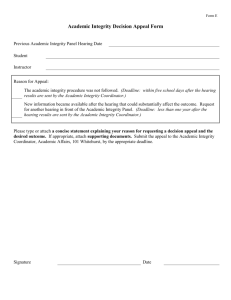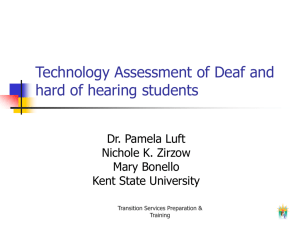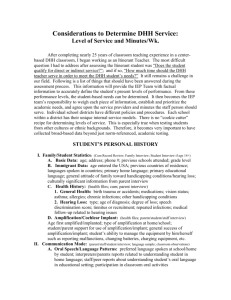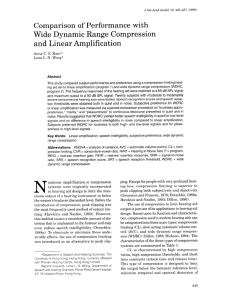CORE and CARE Worksheet
advertisement
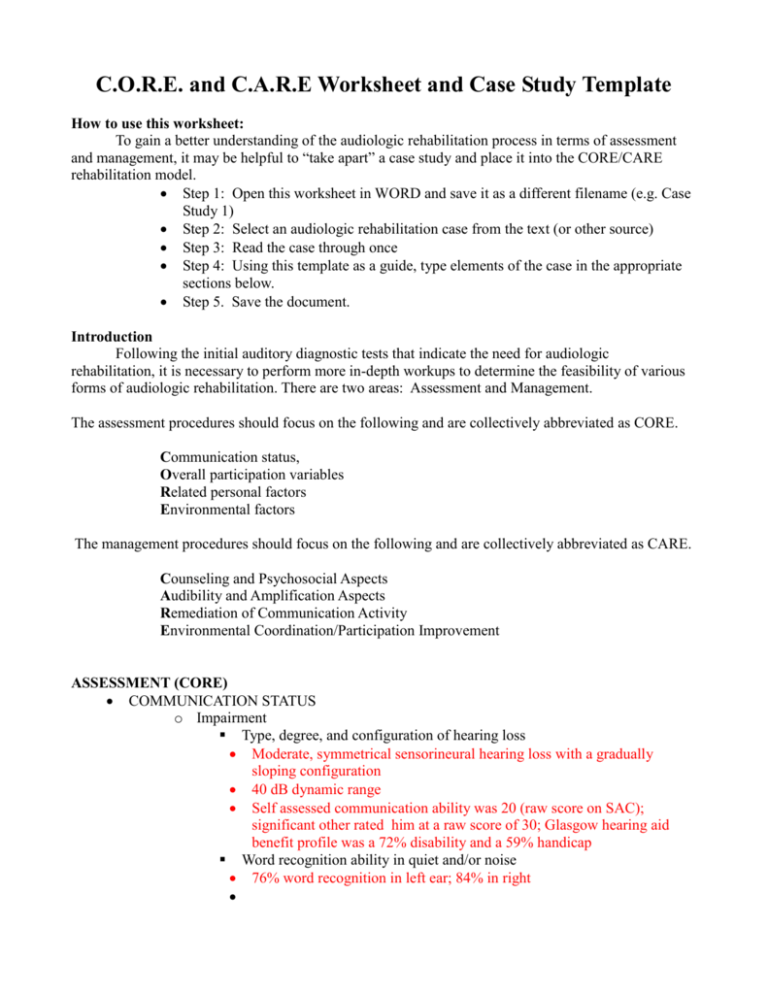
C.O.R.E. and C.A.R.E Worksheet and Case Study Template How to use this worksheet: To gain a better understanding of the audiologic rehabilitation process in terms of assessment and management, it may be helpful to “take apart” a case study and place it into the CORE/CARE rehabilitation model. Step 1: Open this worksheet in WORD and save it as a different filename (e.g. Case Study 1) Step 2: Select an audiologic rehabilitation case from the text (or other source) Step 3: Read the case through once Step 4: Using this template as a guide, type elements of the case in the appropriate sections below. Step 5. Save the document. Introduction Following the initial auditory diagnostic tests that indicate the need for audiologic rehabilitation, it is necessary to perform more in-depth workups to determine the feasibility of various forms of audiologic rehabilitation. There are two areas: Assessment and Management. The assessment procedures should focus on the following and are collectively abbreviated as CORE. Communication status, Overall participation variables Related personal factors Environmental factors The management procedures should focus on the following and are collectively abbreviated as CARE. Counseling and Psychosocial Aspects Audibility and Amplification Aspects Remediation of Communication Activity Environmental Coordination/Participation Improvement ASSESSMENT (CORE) COMMUNICATION STATUS o Impairment Type, degree, and configuration of hearing loss Moderate, symmetrical sensorineural hearing loss with a gradually sloping configuration 40 dB dynamic range Self assessed communication ability was 20 (raw score on SAC); significant other rated him at a raw score of 30; Glasgow hearing aid benefit profile was a 72% disability and a 59% handicap Word recognition ability in quiet and/or noise 76% word recognition in left ear; 84% in right o Visual abilities Acuity Speechreading o Language ability Verbal Manual o Combined sensory abilities Auditory/visual Tactile / Kinesthetic o Expressive / Receptive Communication Ability OVERALL PARTICIPATION VARIABLES o Psychological – neighbor thought Mr. B was depressed o Social Family – lived alone Significant others - neighbor Social class Lifestyle – sedentary o Vocational –retired? o Educational RELATED PERSONAL FACTORS o Personal attitude – SAC suggests that he did not perceive a great deal of impairment o Age 70 y/0 o Gender Male o Educational o Personality o Character Style o Aptitude - previous experience with amplification wasn’t good o Health Considerations Fitness Lifestyle Habits o Upbringing o Coping Styles o Social background o Profession o Previous and current experiences ENVIRONMENTAL FACTORS o Individual’s environment Physical features of the person’s environment – lived alone; limited need for communication; watched TV (could turn it up loud enough to hear, didn’t bother anyone else. Personal contacts o Services environment Social Structure Services available in the work environment Social services Communication services Transportation services o Systems environment Laws, regulations, and rules (formal and informal) o Acoustic environment Quiet? Noisy? Difficult/Simple MANAGEMENT (CARE) COUNSELING/PSYCHOSOCIAL o Interpretation of audiologic findings to the client and other significant persons – admitted he had a problem but that was not reflected in his SAC score. Low demand on his hearing did not result in a great deal of perceived difficulty. Hearing expectations: Realistic ones Instrument operation: On/off, telecoil, telephone use Occlusion effect: User’s voice with hearing aids in place Batteries: Tabs, how long they will last, removal, replacement, dangers Acoustic feedback: What causes it, when is it OK; not OK? System troubleshooting: What to do when there are problems? Insertion and removal: Identifying left, right, insertion, and removal Cleaning and maintenance: Wax and debris cleaning, hair spray, excessive heat, etc. Service, warranty, repairs, follow-up process, etc. o Pertinent information o Counseling / guidance with regard to: Education Vocation Psychosocial Communication – was reluctant to proceed with rehab probably because of some unsuccessful hearing aid fittings in the past and his low communication demand. AUDIBILITY IMPROVEMENT USING AMPLIFICATION AND ASSISTIVE DEVICES o Amplification / assistive device fitting (hearing aids, cochlear implants, amplified phone, signal warning, etc.) Hearing Instrument Orientation (HIO BASICS) – Fit with appropriate amplification that could manage soft and loud sound amplification; multichannel; no volume control. Function and maintenance REMEDIATE COMMUNICATION ACTIVITY o Communication activity Residual communication deficits after audibility management Speechreading training Assertiveness training Communication repair strategies Management of frustration CLEAR was utilized Control communication situations by avoiding noisy areas, poorly lit areas, and the like. Look at speaker: Visual cues from speakers are important and help make up for lost information. Escape and expectations: Be realistic about situations where it will be easy or difficult to hear. Plan strategies for dealing with unfavorable listening situations. Assertiveness: Let others know that you have difficulty hearing and encourage them to gain your attention before speaking and to look at you when they are talking. Repair strategies: If a breakdown occurs in communication, repeat back to the speaker what you did hear and then ask him or her to clarify what you did not hear. ENVIRONMENTAL COORDINATION: PARTICIPATIONIMPROVEMENT o Setting goals for communication Self report – wanted to hear better on phone and in small groups (family visits) o Coordination with other sources of help Physicians, health care professionals, etc. o
